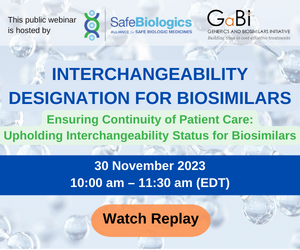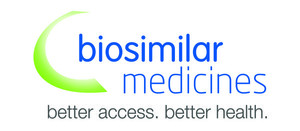Cyclobenzaprine is a muscle relaxant, structurally related to first-generation tricyclic antidepressants. At the 2008 World Congress of Pharmacy and Pharmaceutical Sciences held 29 August – 4 September 2008 in Basel, Switzerland, Ms Tatiane Maria de Lima Souza Brioschi et al. of the University of Sao Paolo in Brazil presented a poster entitled ‘Pharmacokinetics and bioequivalence evaluation of cyclobenzaprine tablets’ in which the bioequivalence of two brands of cyclobenzaprine 10 mg tablets in healthy volunteers was evaluated.
Pharmacokinetics, bioequivalence of cyclobenzaprine tablets
Home/Conferences
|
Posted 04/03/2010
 0
Post your comment
0
Post your comment

The study was approved by the local Ethical Committee and included 26 healthy subjects: 13 males and 13 females. It was performed with two different 10 mg cyclobenzaprine tablets: the test product (Miosan of Apsen in Brazil) and the reference product (Flexeril of Merck & Co). It was a randomized, open and crossover study with a single oral dose, two periods and two sequences design. Tablets were administered after an overnight fasting with 200 mL of water. Fasting continued for a further four-hour period. Subjects were provided with standard meals after four hours (lunch), seven hours (snack) and 11 hours (dinner) after drug administration. Blood samples were collected according to a schedule which included a blank before-drug sample just prior to drug administration and samples at 1, 2, 3, 4, 5, 6, 7, 8, 9, 10, 12, 24, 48, 72, 96, 144, 192 and 240 hours after drug administration. Plasmatic cyclobenzaprine was quantified by validated method using high-pressure liquid chromatography (HPLC) with mass spectrometric (MS) detection: LC-MS/MS.
The average plasmatic decay curves of test (Miosan) and reference (Flexeril) products were similar ASC0-t (test: 193,00 ngxh/mL; reference: 191,66 ngxh/mL), in the same way that absorption parameters Cmax (test: 7,16 ng/mL; reference: 6,95 ng/mL), tmax (test: 4,61 h; reference: 4,48 h), Ka (reference: 0,79; test: 0,67) e t(1/2)a (reference: 1,79 h; test: 2,02 h). The elimination parameters Cl (test: 31,15 L/h; reference: 31,73 L/h), Vd (test: 1378,54 L e reference (1357,87 L), kb (reference: 0,08; test: 0,08), t(1/2)β (reference: 9,43 h; test: 9,20 h), kg (reference: 0,02; test: 0,02) e t(1/2)γ (reference: 32,92 h; test: 31,67 h) were similar between products too. The multivariate analysis accomplished through analysis of variance (ANOVA) for the assessment of product, group and period effects, revealed the absence of any of these effects in the present study, indicating that the crossover design was properly performed. The 90% confidence intervals (90% CI) for the ratio of Cmax(93.0–112.0 %), AUC0-t(92.6–111.1 %) and AUC0∞ (93.1–110.4 %) values for the test and reference products fell within the 80–125% interval, as has been proposed for bioequivalent products by regulatory agencies such as the US FDA, the European Medicines Agency and the Brazilian Agência Nacional de Vigilância Sanitária (ANVISA). Statistical analysis of Cmax, AUC0-t e AUC0-∞ parameters indicated no significant difference between two brands of 10 mg cyclobenzaprine hydrochloride products. Based on the results of this study, they concluded that the two products are bioequivalent and can be considered interchangeable in medical practice.
Reference:
Tatiane Maria de Lima Souza Brioschi et al. Pharmacokinetics and bioequivalence evaluation of cyclobenzaprine tablets. Poster at the 2008 World Congress of Pharmacy and Pharmaceutical Sciences in Basel, Switzerland. 29 August – 4 September 2008
Guidelines
New decree for the prescription and commercialization of medicines in Argentina
FDA issues draft guidance on biosimilars and interchangeable biosimilars labelling
Policies & Legislation
Strategic plans of ANVISA and COFEPRIS to advance health regulation
Panama enacts new bill to guarantees the supply of medicines
ASBM/GaBI 2023 webinar on INTERCHANGEABILITY DESIGNATION FOR BIOSIMILARS

Home/Conferences Posted 12/12/2023
The best selling biotechnology drugs of 2008: the next biosimilars targets







Post your comment